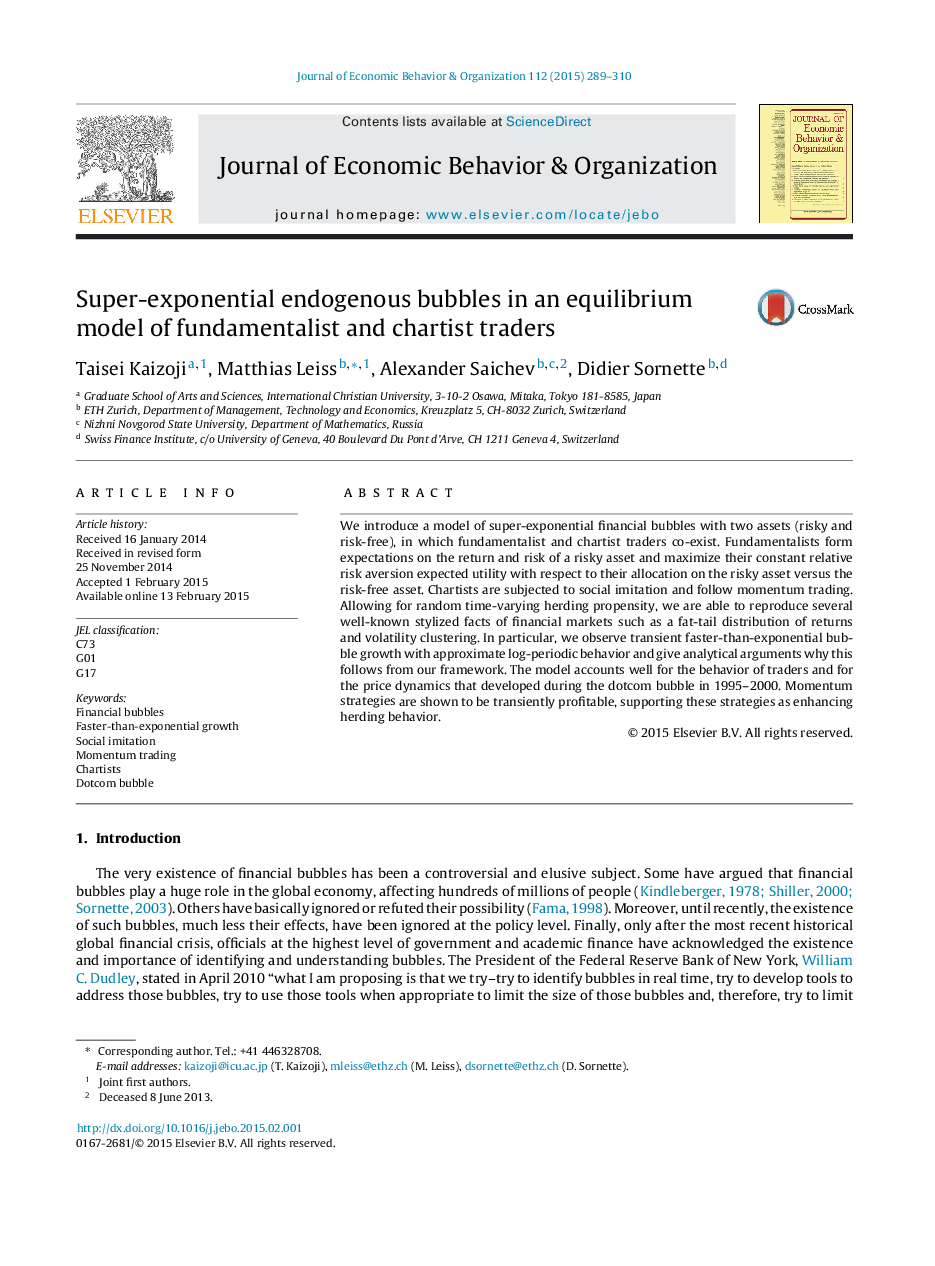| Article ID | Journal | Published Year | Pages | File Type |
|---|---|---|---|---|
| 7243278 | Journal of Economic Behavior & Organization | 2015 | 22 Pages |
Abstract
We introduce a model of super-exponential financial bubbles with two assets (risky and risk-free), in which fundamentalist and chartist traders co-exist. Fundamentalists form expectations on the return and risk of a risky asset and maximize their constant relative risk aversion expected utility with respect to their allocation on the risky asset versus the risk-free asset. Chartists are subjected to social imitation and follow momentum trading. Allowing for random time-varying herding propensity, we are able to reproduce several well-known stylized facts of financial markets such as a fat-tail distribution of returns and volatility clustering. In particular, we observe transient faster-than-exponential bubble growth with approximate log-periodic behavior and give analytical arguments why this follows from our framework. The model accounts well for the behavior of traders and for the price dynamics that developed during the dotcom bubble in 1995-2000. Momentum strategies are shown to be transiently profitable, supporting these strategies as enhancing herding behavior.
Related Topics
Social Sciences and Humanities
Economics, Econometrics and Finance
Economics and Econometrics
Authors
Taisei Kaizoji, Matthias Leiss, Alexander Saichev, Didier Sornette,
